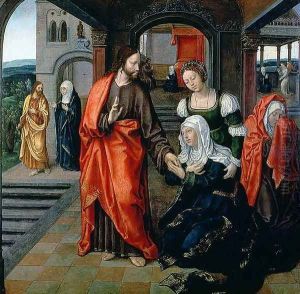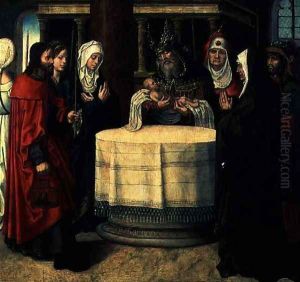Jan van II Coninxloo Paintings
Jan van II Coninxloo was a Flemish Renaissance painter mainly known for his contributions to the landscape genre and as a member of a family of artists that had significant influence in the Brussels area. Born in 1489 into a family with artistic lineage, Jan was the grandson of Jan van Coninxloo I and likely received his initial training within the family workshop.
During the early 16th century, the Northern Renaissance was in full swing, with artists like Albrecht Dürer and Hieronymus Bosch making significant contributions to art. Coninxloo would have been part of this vibrant cultural milieu. He is often credited with helping to introduce and develop the world landscape style, which featured expansive and often imaginary landscapes. These landscapes served as backdrops for religious and historical scenes and were characterized by a high horizon line and detailed natural elements.
Little is known about Coninxloo's life, but his works suggest that he was active in Antwerp and Brussels, two important centers for art during his time. Antwerp, in particular, was a hub for artists, merchants, and humanists, and it played a crucial role in the spread of Renaissance ideas across Northern Europe. In this environment, Coninxloo would have been exposed to Italian Renaissance art and may have been influenced by the works of Joachim Patinir, with whom he is sometimes confused due to the similarity in their styles.
His exact date of death is uncertain, but he is believed to have been active until at least 1560. Coninxloo's legacy persisted through his influence on later generations of landscape painters in the Low Countries. His works, though not as well-documented or as numerous as some of his contemporaries, reflect the transition in Northern European art from the medieval to the Renaissance style and contribute to the understanding of the development of landscape painting in the Flemish tradition.

